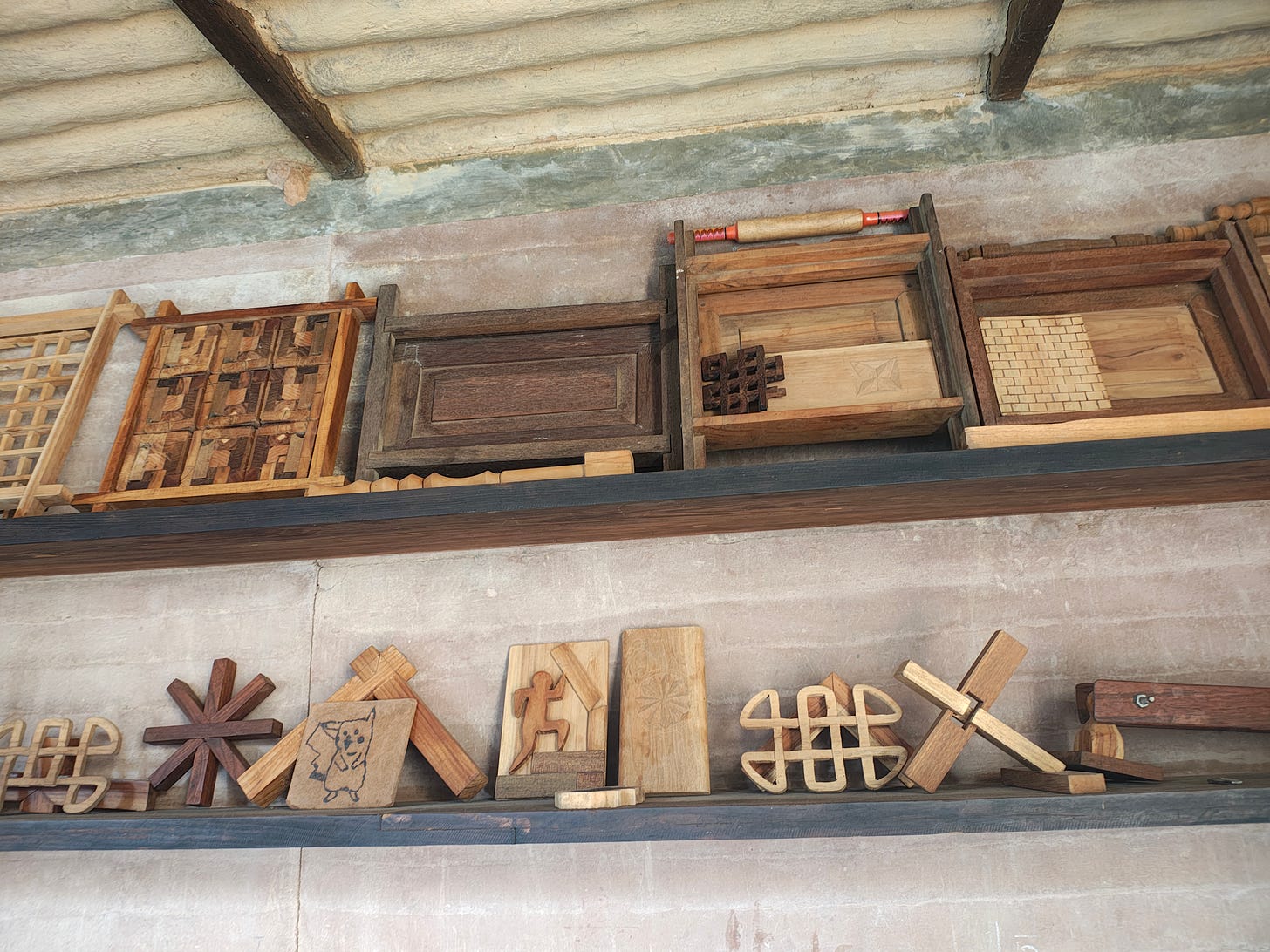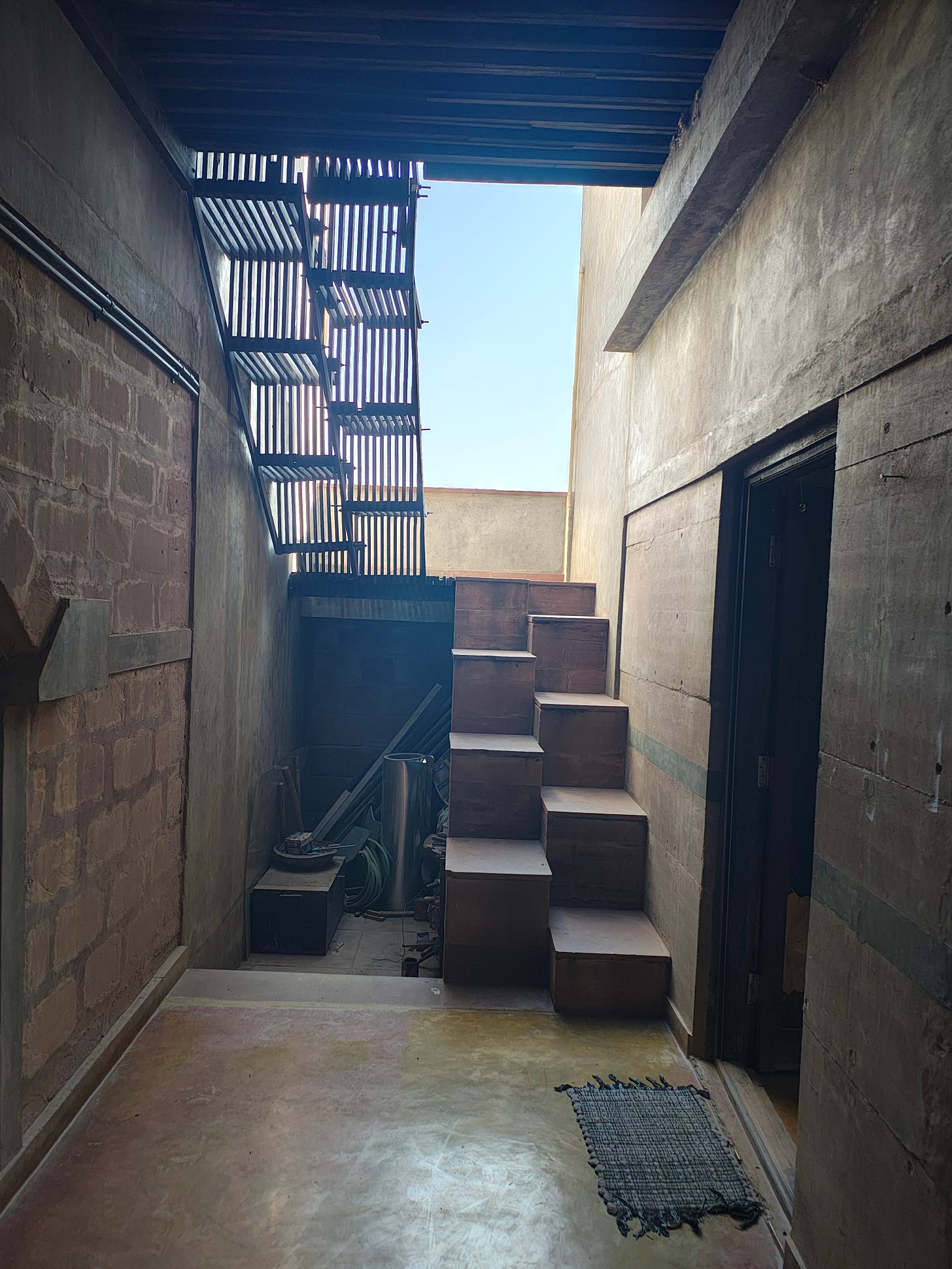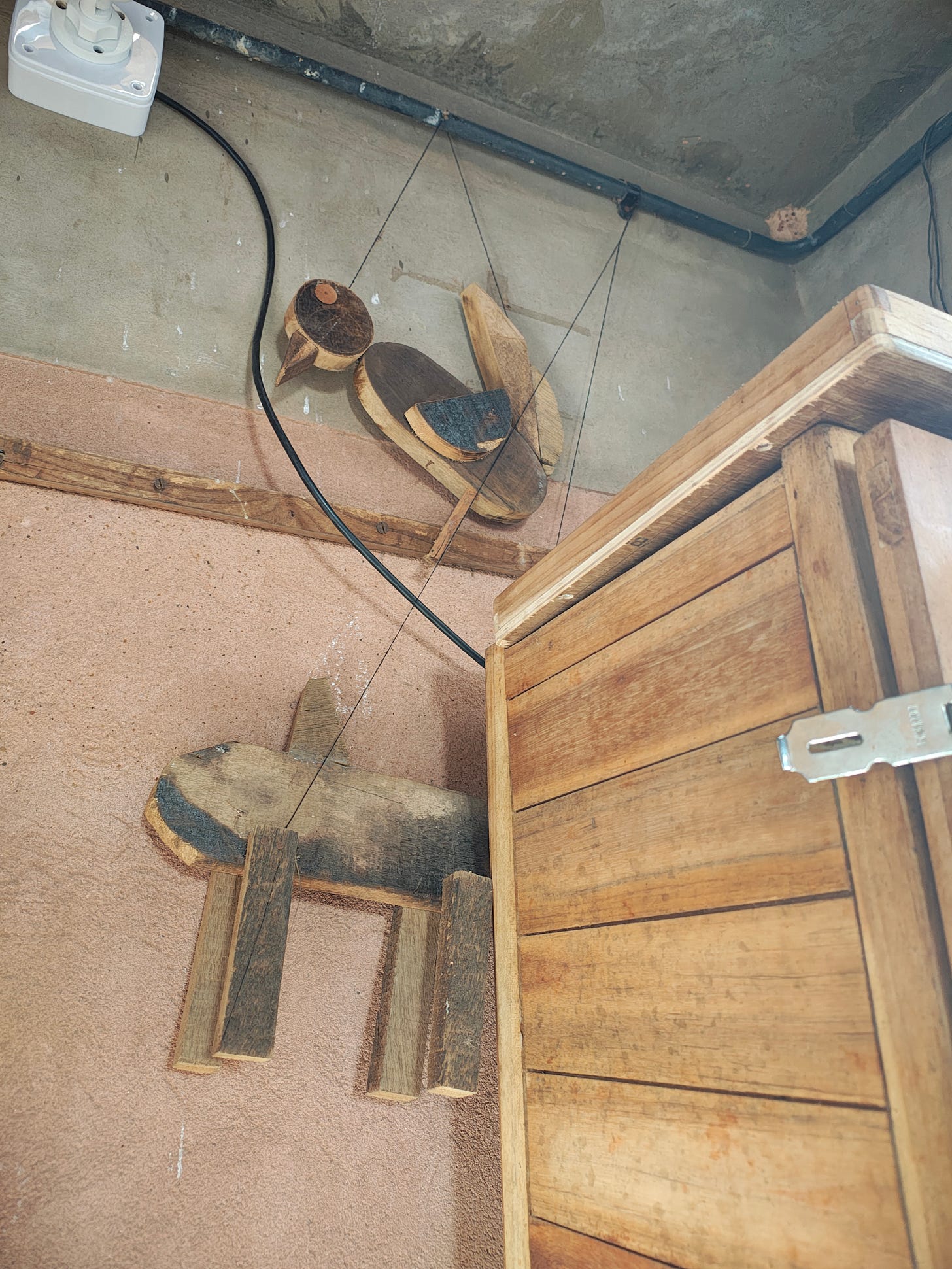When a sheikh wanted to renovate his 17th century mud buildings
Dive in to read four short stories about sustainable architecture with architect and environmentalist Sandeep Virmani of Hunnarshala (Reading time: 6 minutes)
Every Thursday, we share a news story (or two) about India and its relationship with sustainability. This Thursday, decided to take a departure from news stories to share stories about people who have been living sustainably for years.
Okay, the title of this edition is a bit click-baity but a sheikh does feature in one of the stories. Bear with me until then :)
I recently got the opportunity to volunteer with the NGO Youth Alliance (YA) to organize their 10-day village immersion program Gramya Manthan in Kutch, Gujarat.
There were 22 participants from all over India and 8 team members (including 4 alumni like yous truly) on this journey.
One of our pit-stops was Hunnarshala, a unique organization designed by architect and environmentalist Sandeep Virmani ji in Bhuj. Hunnarshala does a couple of things -
Create rural housing (in partnership with the government or NGOs) where they design and/or actually make these houses.
Test different kinds of mud and other natural materials that can be used to make structures, and shares that expertise with NGOs. Their lab answers questions such as - how much load can a mud wall take? If an earthquake comes, will the wall stay intact or not.
Run a sister organization called Kaarigarshala where they train the youth of Kutch villages to become masters of woodwork
With decades of experience working with natural buildings, Sandeep ji generously shared his life stories with us that day. I am sharing four of them here, the third one being my favourite! Reserving the rest for a part 2 follow up of this post :) Enjoy!
#1 What are pucca houses?
While working on a social housing project in Gujarat, the Hunnarshala team documented 250 different ways of building a house with 2 rooms, a verandah and a kitchen that were already present in Gujarat! Out of these, the team selected 50 different typologies that they thought could be implemented and then went to the villagers to understand what their needs were before they designed houses for them.
Usually, when the government builds such houses in villages, “they make concrete boxes that are barely used by villagers”. As per Sandeep ji, 28-30% of these houses break down and most others are used by villagers for storage or keeping their livestock but not for living in them.
Funnily enough, such houses are classified as “pucca” houses in government lexicon while traditional mud houses are called kuchha houses. “Any building that can last at least 30 years should be called pucca,” Virmani ji shared. But the cement houses were not lasting even 10 years in some cases.
On the other hand, laterite soil has iron which oxidises when it comes in contact with air and a house made of that, becomes stronger with time. I know of another person who used to have their ancestral home made of mud in Kerala and it took a week to demolish it because it had become so strong over the years. Mud is also non-inflammable i.e. cannot catch fire.
# 2 Funding Kaarigarshala
This is a true story. The sheikh of Abu Dhabi wanted to restore his 17th-century old buildings that were made of mud and asked for help. “The Hunnarshaala team took 150 artisans who were proficient in working with mud, worked in Abu Dhabi for three years, and came back very rich. With that money, we were able to set up a school for artisans”, Virmani ji said. That’s Kaarigarshala.
Kaarigarshala has a one and a half year long training program with about 25 young boys every year and they have been running this for 12 years now. The campus of Kaarigarshala is so beautiful, I couldn’t get enough! Here are some pictures.


#3 The spirit of Aabhat
There is a tradition among the Banni pastoralist community of Kutch called Aabhat. One person from each family has to come together to dig a well every year because it's a water-scarce area and they want to make sure they have water available when they return from their travels. If a person from any family doesn’t show up for the well digging, the aabhat can’t start.
Now, in case there is a fight among two men from two different families, and one of them refuses to come and help, the youngest daughter of the family is sent to invite him. Since it's difficult to say no to such a sweet invitation, the disgruntled person usually turns up for the aabhat. But the most beautiful part is, after they dig the well, the two people who had a fight must eat food from the same plate. Wow, what a tradition!
These pastoralists travel with their buffaloes wherever they go and are quite attached to them. Interestingly, a Dalit community called the Meghwals, works closely with the Bannis. They take the hide of the buffaloes that die from the Bannis for their leather work, and even make leather slippers out of specific buffaloes to give to the owner of that buffalo so it stays with them forever in spirit.
#4 Thanks, but we don’t need boats for fishing
There is a pagadia community in Kutch that fishes without boats. They put the net in the high tide which is almost 1-1.5 km and that’s enough for fish to get caught.
Once after a cyclone, the nets of this community got lost. Hunnarshala gave them loans to buy new ones which they easily returned in six months. Then, the team advised them to buy boats to fish.
The community folk said, with the nets, we just work for half an hour a day. The rest of the time we enjoy, sing, and dance. The boats need a lot of maintenance and care. We are really happy the way we are.
The community is considerate of the natural breeding cycles of the fish. They don’t fish post monsoons as it is breeding season. They let the fish grow for four months and then harvest so their population is always in balance. They put all their nets together, sometimes a km long. The catch is always collectively auctioned and a part of the proceeds put into a masjid for insurance that any family can use in case of an emergency. That’s your social security net without a government one in place.
Unfortunately, according to Virmani, Adani’s solar and wind projects in the Kutch region have reduced the catch of fish and lobsters by almost 80%. Makes you think that green may not always be green but has shades of grey. Renewable energy is one way to reduce our country’s greenhouse gas emissions but a blind focus on them, ignoring the other costs, especially with respect to biodiversity will cause more problems than solve them.
That’s all for today! Thanks for reading this edition of Break the Bubble! See you next week :)
Recommendation Corner
Play with mud: If you are in Hyderabad and want to work with mud or actually make a mud structure in your house or garden, check out
Oorna Farm which hosts regular workshops on mud structures. There’s one coming up on 23rd February. Register here if you haven’t already!
Liinkgreen, an upcoming architectural firm started by a very young Hunnarshala alumna. What I loved about her vision is giving talented building artisans the respect and space they deserve, and not treat them as low-level employees who need to be told how to do things but equal partners in design and creation.
Watch: A short 101 on how to go about sustainable development. The #4 fishermen’s story above reminded me of this powerful piece created by Owen Ginzberg. There is also a PDF booklet version of this if you prefer to read.






